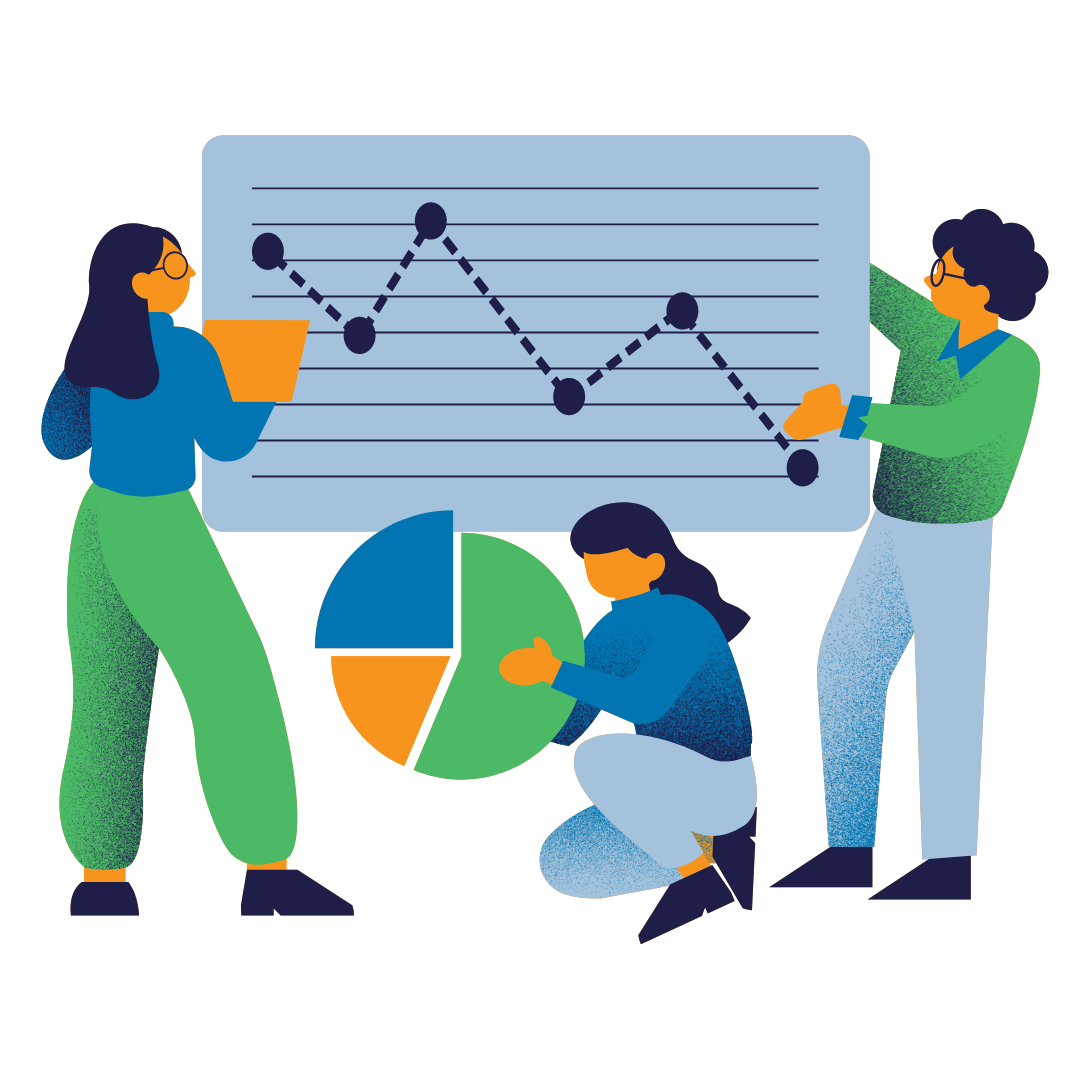By analyzing data using Python, organizations can make more informed decisions based on insights derived from their data. The outcome of implementing data science with Python is typically improved business performance, increased efficiency, and a deeper understanding of data-driven insights.
Version 1 – View the Curriculum
Version 2 – View the Curriculum
Duration: 22 hours / 3 days
4 Lessons
R is an open source environment used for solving the statistical problems. This package is useful for researchers doing research in their respective fields; R will help you in analyzing your experimental results.
In this course, the candidate will learn how to program in R and how to use R for effective data analysis and other statistical inference. You will learn how to install and configure software necessary for a statistical programming environment and describe generic programming language concepts as they are implemented in a high-level statistical language.
These modules covers practical issues in statistical computing which includes programming in R, reading data into R, accessing R packages, writing R functions, debugging, profiling R code, and organizing and commenting R code.
R For: R programming tool is useful for all the research scholars and business developers for performing the analysis on the scientific data, scholars from following field can use this environment for their effective data analysis;
- Commerce
- Management
- Computer Science
- Information Technology
- Biological / Life Sciences
- Bioinformatics
- Biotechnology
- Engineering / Technology
- Economics
- Ergonomics
- Medical Sciences etc
View the Curriculum
Duration: 8 hours / 1 day
6 Lessons
To provide comprehensive training on data warehousing concepts and business intelligence tools for improved decision-making and data analysis.
Module 1: Introduction to Data Warehousing
Module 2: Data Modeling and Design
Module 3: Extract, Transform, Load (ETL) Process
Module 4: Introduction to Business Intelligence
Module 5: Data Visualization in BI
Module 6: Business Intelligence Implementation
View the Curriculum
Duration: 40 hours / 5 days
8 Lessons
Learn about Apache Spark and the Spark 3.0 architecture
Learn Big data Concept
Hadoop Ecosystem
Python DataScience
Build and interact with Spark DataFrames using Spark SQL
DAY 1
Module 1: Introduction to Hadoop, Spark and Python
- Introduction to Big Data
- Hadoop Architecture
- Mapper and Reducer
- What is Apache Spark?
- Spark Jobs and APIs
- Spark 3.0 architecture
- Using Anaconda, Notebook
- Installation and Configuration
- Python Introduction
- Python Objects
- Complex
- Boolean
- Python DataStructure
- list
- list methods
- tuple
- string
- string methods
- dictionary
- Dictionary methods with examples
Module 2: Dictionary Case Study
- Control Structure
- Functions
- glob variale
- Variable Argument *arg, **kwarg
- Built in Functions
- range
- lambda
- filter
- map
- reduce
- set
- zip
- Conclusion and Summary
DAY 2
Module 3: Advance Python
- File Handling
- Exception Handling
- List Comprehension
- Dictionary Comprehension
- Modules
- Uer Define Modules
- Built in Modules
- os
- sys
- system
- glob
Module 4: Introduction to Object Oriented Programming
- Class
- Methods
- Inheritance
- Case Study
- Iterator
- Generator
- Regular Expression ( re )
- File Handling and Exception Handling
- Conclusion and Summary
DAY 3
Module 5: Python Library for DataScience Numpy
- Hands on Session
- Array Manipulation
- Matrix Manipulation
- pandas
- Hands on Session
- Data Series
- DataFrame
- Case Study
- Data Visualisation
- Matplotlib
- Case Study
DAY 4
Module 6: PySpark/Spark RDD Resilient Distributed Datasets
- Internal workings of an RDD
- Creating RDDs
- Global versus local scope
- Transformations Functions
- Actions Functions
- Hands on Session on RDD and Spark
- Assignments 1
- Best Practices 1
- Project Discussion using Pyspark
- Conclusion and Summary
DAY 5
Module 7: DataFrames
- Python to RDD communications
- Catalyst Optimizer refresh
- Speeding up PySpark with DataFrames
- Creating DataFrames
- Simple DataFrame queries
- Interoperating with RDDs
- Querying with the DataFrame API
- Hands On Session on Pandas DataFrame and PySpark
- Assignments 2
Module 8: Prepare Data for Modeling
- Checking for duplicates, missing observations, and outliers
- Assignments 3
- Conclusion and Summary
- Group Project Presentation
View the Curriculum
Duration: 8 hours / 1 day
6 Lessons
To provide an in-depth understanding of Power BI and Excel for data analysis, visualization, and reporting purposes.
Module 1: Introduction to Excel
Module 2: Advanced Excel Functions
Module 3: Introduction to Power BI
Module 4: Power BI Data Modeling
Module 5: Power BI Visualizations
Practical Exercises and Hands-on Labs
View the Curriculum
Duration: 17 hours / 2 days
5 Lessons
Module 1:
- Installation
- Explore Power BI environment and features
- Analyze data with Power BI
- Power BI building blocks
- Basic features of Power BI
- Data Filtering
- Data Processing
Module 2:
- Exploring data
- Model data in Power BI
- Power BI for consumer
- Formulas
- Aggregations
Module 3:
- Visualization with Power BI
- Publish and
Share Report on Mobile
Module 4: Case Study
Module 5: Assignments and Evaluation
View the Curriculum
Duration: 50 hours / 6 days
16 Lessons
In this course, you will learn how clinical data are generated and the format of this data. You will learn Statistics, SQL, Python, Machine Learning methods with clinical cases.
Completing a clinical data science course can help students enhance their proficiency in analyzing complex clinical data sets. This includes learning advanced statistical techniques, data visualization, and machine learning algorithms.
With a solid foundation in clinical data science, professionals can make more informed decisions based on evidence and data-driven insights. By completing these projects, students can develop their research skills and contribute new knowledge to the field.
DATA SCIENCE WITH PYTHON
Module 1:
- Data Types
- Variables And Other Basic Elements Control Statements
- Date and Time in Python
- Arrays and Strings
Module 2:
- Lists and Tuples
- Dictionaries
- Series
- DataFrame
- Panel
- Basic Functionality
Module 3:
- NumPy
- Pandas
- SciPy
- Visualization with Matplotlib
Module 4:
- Data Wrangling
- Web Scrapping
- Exploratory Data Analysis
- Feature
Engineering - Feature Selection
Module 5:
- Project Case Studies: Patient Demographic Analysis
- Healthcare Analysis
MACHINE LEARNING WITH PYTHON
Module 1:
- Function Application
- Reindexing Python
- Iteration
- Sorting
- Working with Text Data Options & Customization
- Indexing & Selecting Data Statistical Functions
- Window Functions
- Date Functionality
- Time delta
- Categorical Data
- Visualization Python Pandas – IO Tools
Module 2:
- Supervised and UnSupervised Learning
- Types of Supervised Algorithms
- Semi-supervised
- Reinforcement Train
- Test
- Validation Split
Module 3:
- Semi-supervised
- Reinforcement Train
- Test
- Validation Split
- R square
- Introduction to Scikit learn
- Training methodology
- Hands on linear regression
- Ridge Regression
- Logistics regression
- Precision Recall ROC curve
- F-Score
Module 4:
- Classification: Decision Tree
- Cross Validation Bias vs Variance
- Ensemble approach Bagging
- Boosting Random Forest Variable Importance
Module 5:
- K-Means clustering
- Hierarchical Clustering
- Recommender System and Association
- Project case studies: Classification of drugs, prediction of heart disease, Association of Ingredients in Drug, Liver Disease Prediction
SQL
Module 1:
- Introduction to SQL, MYSQL installation and setup
Module 2:
- Entity relationship and database normalization
- Working with database and tables
Module 4:
- Working with operators and constraints
Module 5:
Module 6:
- Stored procedures and Triggers
Duration: 30 hours / 4 days
7 Lessons
Employ cutting edge tools and technologies to analyze healthcare data.
Predict different outcomes based on the data you provide
Apply quantitative modelling and data analysis techniques to the solution of real-world business problems, communicate results, and effectively present these results using data visualization techniques.
Module 1: Excel Fundamentals, Data Handling in Excel Sorting the Data, Conditional Formatting, Advance Functions
Module 2: Pivot Tables, What-If-Analysis
Module 3: Analysis Toolpak, Patient Demographic, Drug Content Analysis, Diagnosis Analysis
Module 4:
- Installation
- Explore Power BI environment and features
- Analyze data with power BI
- Power BI building blocks
- Basic Features of Power BI
- Data Filtering
- Data Processing
- Exploring data
- Model data in Power BI
- Power BI for consumer
- Formulas
- Aggregations
- Data Discovery with Power BI Desktop
- Transforming Data (Basic Transforms)
- Transforming Data (Add Column From Example)
- Transforming Data (Appending Queries)
- Transforming Data (Merging Queries)
- Transforming Data (Combine Files)
- Transforming Data (M Query Basics)
- Transforming Data (Parameters and Templates)
- Transforming Data (Other Query Features)
- Introduction to Modeling Data
- Creating the Data Model (Modeling Basics)
- Creating the Data Model (Model Enhancements)
- Creating the Data Model (What If Parameters)
- Creating Calculated Columns and Tables (DAX Basics)
- Creating Calculated Columns and Tables (Navigation Function)
- Creating Calculated Columns and Tables (Calculated Tables)
- Creating Calculated Measures (Measure Basics)
- Creating Calculated Measures (Time Intelligence Functions)
Module 5:
- Introduction to Visualizing Data
- Creating Basic Reports with the Power BI Desktop
- Creating Interactive Reports (Adding Slicers for Filters)
- Creating Interactive Reports (Visualizing Tabular Data)
- Creating Interactive Reports (Visualizing Categorical Data)
- Creating Interactive Reports (Visualizing Data Trends)
- Creating Interactive Reports (Visualizing Categorical and Trend Data Together)
- Creating Interactive Reports (Visualizing Geographical Data with Maps)
- Creating Interactive Reports (Visualizing Goal Tracking)
- Creating Interactive Reports (Using Custom Visuals)
- Creating Interactive Reports (Digital Storytelling)
- Creating Interactive Reports (Other Features)
- Using the Power BI Service (Deploying to the Power BI Service)
- Using the Power BI Service (Creating and Sharing Dashboards)
- Using the Power BI Service (Using Power BI Q&A)
- Using the Power BI Service (Setting up App Workspaces)
- Using the Power BI Service (Subscriptions and Alerts)
- Using the Power BI Service (Excel Integration)
- Using the Power BI Service (Export and Embed Options)
- Refreshing the Data (Refreshing Data Overview)
- Refreshing the Data (Installing the Data Gateway)
- Refreshing the Data (Scheduling a Data Refresh)
- Mobile BI (Power BI Mobile Overview)
- Mobile BI (Designing Reports and Dashboards for Mobile)
- Mobile BI (Interacting with the Power BI Mobile App)
- Dashboards
- Workbooks
- Reports
- Datasets
Module 6:
- Introduction to DAX
- Class Introduction (Class Files)
Module 7:
- Data Visualization Case Study using Electronic Medical Record
View the Curriculum
Duration: 8 hours / 1 day
5 Lessons






